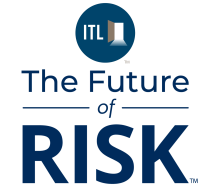Your AI and automation initiatives will fail.
Not because of bad code. Not because your data scientists aren't smart enough. But because you'll lack the one thing that determines whether any AI initiative succeeds: observability.
If you can't see what your automation is doing — how it's affecting business processes, where it's breaking down, and what value it's delivering — you're flying blind. And in high-stakes domains such as distribution, new business underwriting, claims, and retention, that's a recipe for expensive failure.
The insurance industry is doubling down on AI, machine learning, and process automation. But here's the truth most don't want to hear: Implementing AI is the easy part. Proving it works — and improving it over time — is where the real challenge lies.
Automation Without Visibility Is Just Faster Failure
At Neutrinos, we work with insurers that are pushing the boundaries of intelligent automation. And we're seeing, again and again, that after the initial excitement of go-live, leaders are left asking:
- Is it actually working?
- Are we saving time, or just doing things faster without better outcomes?
- Where is human intervention still needed - and why?
These questions aren't technical — they're strategic. And they're impossible to answer without observability baked into the entire automation lifecycle.
This isn't about tracking CPU usage or memory spikes. Observability in the context of AI and process automation means real-time, contextual insight into your business metrics:
- How is the policy issuance cycle trending post-automation?
- Are underwriters accepting or overriding AI-generated decisions?
- Which customer segments are seeing improved experiences—and which aren't?
Without this visibility, AI becomes a black box. And black boxes don't earn trust — or ROI.
The Observability Trinity: Leading, Lagging, and Real-Time Indicators
To extract value from AI initiatives, insurers need to shift from retrospective reporting to proactive insight. That means tracking three types of indicators:
- Leading Indicators – Metrics that forecast success or failure early, such as time-to-decision, document intake accuracy, or triage confidence scores.
- Real-Time Signals – Operational insights that allow for immediate course correction, like exception frequency, process fallbacks, or system latencies.
- Lagging Indicators – Traditional business outcomes like cost reduction, improved persistency rates, or faster policy issuance cycles.
The magic lies in correlating them. If you see triage decisions being overridden frequently (real-time), it could signal that your risk model needs retraining (leading), which if left unaddressed could result in increased underwriting time and reduced efficiency (lagging).
Observability makes this feedback loop visible — and provides automated, actionable insight.
When this visibility is fully embedded into the automation lifecycle — from initial ideation and design to deployment and continuous improvement — insurers can make intelligent, timely adjustments to improve performance by shifting observability left.
Use Case: New Business Underwriting in Life & Annuities
Life & annuities underwriting is ripe for transformation — and risk. The process involves vast amounts of unstructured data, human judgment, and regulatory complexity. That's why insurers are increasingly applying AI to:
- Automate document extraction and data enrichment
- Use natural language processing (NLP) to analyze medical records and lifestyle disclosures
- Triage applications for fast-track vs. full manual review
Sounds great. But after deployment, reality sets in: Are the right cases being fast-tracked? Are policy decisions aligned with actual risk? Are underwriters trusting the AI or working around it?
This is where observability must step in. A well-designed observability framework will monitor metrics like:
- Fast-track case approval vs. post-issue adjustment rates
- Frequency of manual intervention by underwriters
- Average time to underwrite per segment, before and after automation
- Confidence vs. override correlation for AI-generated recommendations
These aren't just performance metrics — they're trust metrics. And they directly inform whether your AI is doing what it was intended to do.
From Insight to Action: Why Observability Isn't Passive
Observability isn't just about dashboards and data. It's about decisions.
Once you have visibility into how your automation is performing, you can begin to optimize. You might adjust your triage rules. Retrain your NLP models. Refine your underwriting workflows. Or even re-segment your customer cohorts.
The point is: AI isn't static. Your observability layer shouldn't be either.
In fact, the next evolution of observability is prescriptive: platforms that not only show you what's happening but recommend what to do next. This is where proactive optimization begins — not with human guesswork but data-backed decision support.
Why to Build Observability In, Not On
Most platforms treat observability as a bolt-on — something you figure out after launch. At Neutrinos, we believe it should be core to your automation architecture.
So our automation platform includes observability capabilities that track the entire lifecycle of a process:
- From intake to triage to decision
- From AI model inference to human review
- From business rules to real-world outcomes
It's not just visibility for IT — it's insight for business leaders, compliance teams, underwriters, and customer experience (CX) strategists.
Whether it's surfacing drops in the policy journey, highlighting model drift, or comparing AI-generated recommendations to human decisions — effective observability helps insurers optimize not just automation, but outcomes.
Observability: The Real AI Differentiator
In a market where most insurers are deploying similar tools and technologies, the competitive edge won't come from your AI engine. It'll come from how well you can see, understand, and improve what it's doing.
Observability is what separates the pilot projects from the enterprise-grade transformations.
Your AI investments don't have to fail. But if you're not watching the right metrics in the right way, you'll never know if they're working — and you won't know how to fix them if they're not.
Visibility isn't optional. It's strategic. And it's the key to unlocking return on investment (ROI) from your AI initiatives.






